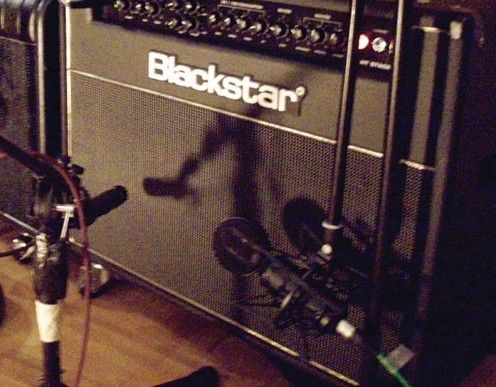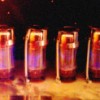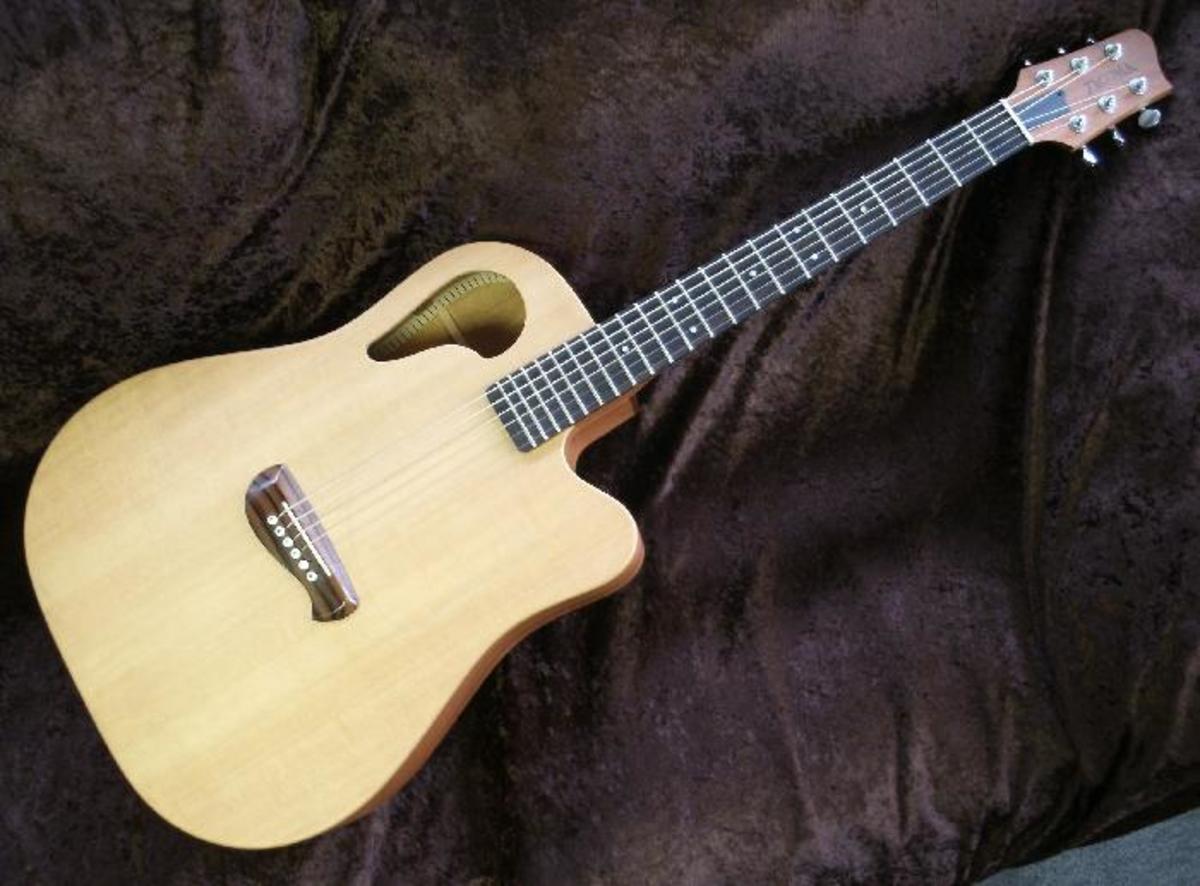Guitar Tube Amp Dummy Speaker Load - Recording Guitar

Guitar Tube Amplifier Dummy Speaker???
Dummy Load?
To get it simple. A Dummy Load is a circuit that 'acts' like a speaker providing a load for certain watts (like a speaker) and for certain impedance (like a speaker again).
For the guitarist a dummy load is useful to run a tube guitar amplifier without a speaker attached. Tube amplifiers suffer major damage if powered without the proper load attached (more common impedance are 8 and 16 ohm for tube amplifier and these bring allow switches to help you match with the speaker's load).
With a Dummy Load you may run an amplifier without hurting the amp and yourself!
A Dummy Load is very useful to record guitar. Very often tube amplifiers deliver more power than you wished. If you record at home for example, you don't want to tear the building down by driving a massive stack at a sm57 or an MD 421. Or do you? Or sometimes you don't even have the stack neither the 57. Recording a guitar is cheaper the dummy load way.
You may also use the Dummy Load to attenuate the output from a tube amplifier to avoid problems with your neighbors. This way you can push your amplifier volume toward that sweet spot without disturbing others. Also if your guitar cabinet can handle nicely your amplifiers sweet spot you can also use the dummy load to soak some power.
Most musicians also use Dummy Loads on stage. This way you can't get that sweet, fat, full blown stack tone and still leave room for the house P.A to work. You can't use a tube amplifier properly on small venues and gigs, so the dummy load is wonderful. Connect one wire to the speaker cabinet and another to the dummy load and have fun!
Also, if you have a vintage tube amplifier. You'll surely need one! Since those old tube amplifiers need power tube distortion to nail down nasty overdrive because they don't have high gain preamps like modern amps do (like a Marshall JCM 800 and early Fender amps). And 100w of full tube power can kill most people! With a dummy load you can turn the volume pot to its maximum power and get some fat, warm, vintage juice!
How to Record Guitar With a Dummy Load (Power Soak) ??
You run your speaker cable to the Dummy Load so that your amp is safe. Most guitar amplifiers have on the back of their chassis 'line outputs' and even 'recording compensated outputs' that take the signal directly from the amplifier with a common line-impedance allowing you to match the amplifier line output with your mixer or recording interface line inputs.
If you monitor this signal it does sound like crap. Since there's no speaker, there also no low-pass filter. Basically that's the guitar speaker effect, it rolls out the high-end starting on 3/5khz. And that's why the sound you'll hear taken directly from the amp sounds like you're frying chips.
What you need is a Speaker Simulator. The name says it all, a device that simulates a speaker frequency response. More complex designs include the acoustic response from the cabinet also. Half of the sound created by a guitar cab comes from its wood structure.
Back in the days these Speaker Simulator where analog and still very rude. Now days with the advent of the digital technologies things have changed a lot. Simple, cheap guitar multi-effects processors all come along with a speaker simulator so all you need is to connect the amplifier output to one of these, turn on the speaker simulator and you're done.
Guitar modeling technology is also evolving pretty fast and there's some amazing speaker simulator software out there. In this case you run the line output signal from your guitar tube amplifier straight into your audio interface line inputs. You may monitor the wet signal if you have an audio interface capable of running latency-free or low-latency or you may record the signal unprocessed (maybe monitor it through the guitar multi-effects processor method as mentioned before, or using a low-level practice amplifier feed with the same line output from the master amplifier) and then apply the Speaker Simulator VST type effect.
This guitar recording technique is also useful for "Reamping". What's "Reamping"? Basically you take the signal you recorded directly from the tube amplifier into another amplifier. This is very useful since you can record guitars quietly in your home then take your guitar tracks to a studio reamp it and recording it using the traditional amp + cab + microphone method. This "reamp" technique is very common worldwide as it gives the producer or mixing engineer the freedom to capture and amplifier according to a mix or according the producer method. The possibilities are limited here. While "reamping" some do even take a full dry guitar sound (before getting into the amp) through a D.I Box so that later in a studio the producer/engineer can choose your tone, the drive, distortion just plain everything. For this you'll need to match impedance since you have a line signal (low/medium impedance) and a guitar amplifier input is (high impedace). Although "reamping" not the real thing (it does give you the same effect a digital modeled guitar preamp but better since the guitar signal had been driven by tubes on an analog path), since it's a digital signal sent out to a tube power amplifier but it does give musicians and producers an array of possibilities to nail that those vintage, warm, cosy guitar sounds every guitarist pursues.
Get Creative:
Interesting Stuff: DIY Tube Microphone Preamps. A Good microphone preamplifier can really make a difference when nailing down those low end chunks or when you are searching for transparency and high definition. Tube preamps drive microphone signals and you can saturate them slightly to bring forward some harmonic content without the harshness of solidstate clipping. Microphone tube preamps are also expensive.
Budget models usually are fake tube preamps since they don't run them at high voltage and you end up paying tubes you don't need since what they do they don't do it right. If you got a hand on electronics or used to a soldering iron you may take a look at these DIY Projects.
You can build a tube microphone preamplifier from scratch!
More on Music, ProAudio, Recording, and DIY:
- Guitar Microphone - Shure SM 57 vs Sennheiser e 609 vs Audix i5 vs Speaker Cabinet Simulator - Recor
Choose the best guitar microphone! We test and review the Shure SM 57, the Sennheiser E 609 and the Audix i5. And also high resolution Speaker Cabinet Simulators. Get the job done, on a budget! But like a Pro! - DIY Guitar Compressor - The Dan Armstrong Orange Squeezer - The Best Stomp Box Projects (Project PCB
Mark Knopfler, John Frusciante, "Sultans of Swing, "Under the Bridge"...ever wanted to nail that silky squashed guitar tone? The Dan Armstrong Orange Squeezer is the answer and you can build your own for under 15 bucks! Just Do-It-Yourself! - DIY Distortion Pedal - The BSIAB (Brown Sound In A Box) - The Best Stompbox Projects (Project PCB &a
The Brown Sound In A Box distortion pedal (BSIAB) in one of the best stomp boxes on the planet. For years thousands of DIY'ers proof it. Build your own for under 20$ and get a Boutique distortion pedal! - Build a Home Studio - Choosing The Best Audio Interface
- DIY Guitar Heaven: The Best DIY Resources, Build Your Own Stompboxes, Effects, Amplifiers and beyond
All you need to know about building your own guitar effect pedals (stompboxes), guitar amps, effects modding with the best website sites and resources from de DIY on-line community. Projects, stores, PCB's, parts, schematics and beyond...



